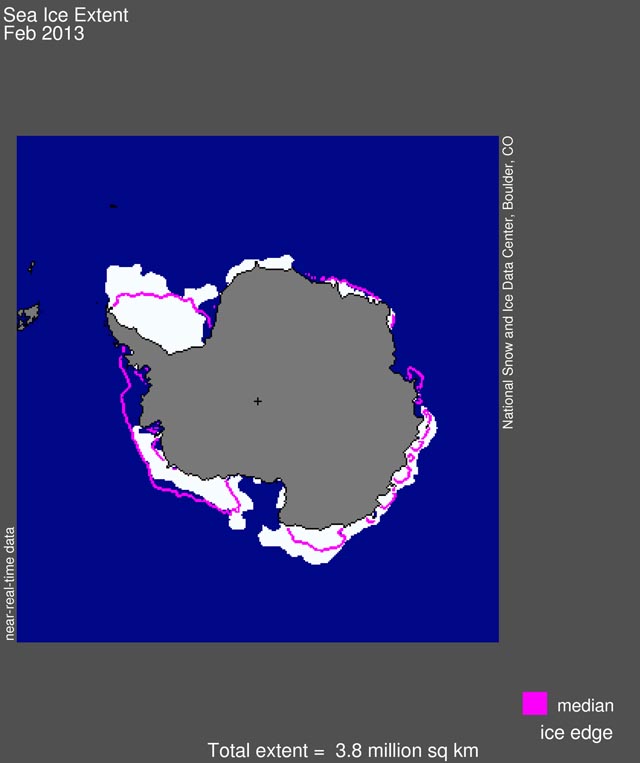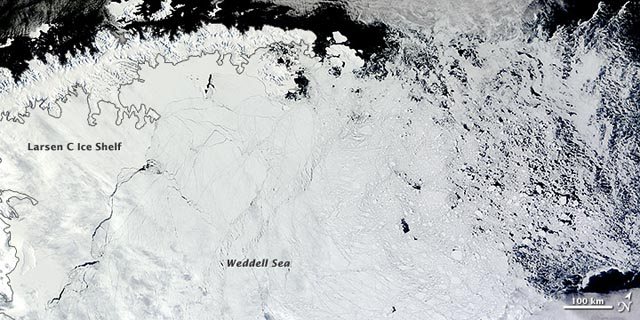|
Iced overSea ice extent exhibits unusual behavior in Weddell SeaPosted March 22, 2013
The first couple of months of 2013 brought some unusual ice behavior in the Weddell Sea, east of the Antarctic Peninsula, as sea ice pushed northward toward warmer latitudes. Last month, the National Snow and Ice Data Center (NSIDC) Walt Meier 
Photo Credit: NSIDC
Antarctic sea ice extent for February 2013 was 3.83 million square kilometers. The magenta line shows the 1979 to 2000 median extent for that month.
“Compared to the ice in the Weddell Sea proper, sea ice in the north is very diffuse, broken up and thin,” Meier noted. But at this time of year, the region north of the Weddell Sea typically has little or no ice at all. So even though the ice north of the Weddell Sea is thin, it’s more ice than normally occurs, he said. Winds played a crucial role in driving the ice northward. NSIDC attributed the unusual pattern to “persistent high pressure in the region west of the Weddell Sea, across the Antarctic Peninsula to the Bellingshausen Sea.” NSIDC explained that the high pressure caused winds to blow from south to north on the east side of the Antarctic Peninsula. These winds pushed ice toward the middle latitudes while at the same time carrying cold air northward. The frigid air impeded surface melting of the sea ice, keeping it frozen as it moved north. Compared to sea ice in the Arctic, Antarctic sea ice generally shows greater variability. Arctic sea ice forms in an ocean basin surrounded by land, while Antarctic sea ice waxes and wanes in an ocean that circles the continent. The latter has more room to grow in the winter and melts more completely in the summer. Moreover, Antarctic ice is subject to a wider range of influences from land, the atmosphere, and the ocean. Sea ice conditions in this region have been problematic for U.S. researchers in recent years. A project to study the Larsen Ice Shelf system, called LARISSA |



For USAP Participants |
For The Public |
For Researchers and EducatorsContact UsU.S. National Science FoundationOffice of Polar Programs Geosciences Directorate 2415 Eisenhower Avenue, Suite W7100 Alexandria, VA 22314 Sign up for the NSF Office of Polar Programs newsletter and events. Feedback Form |


